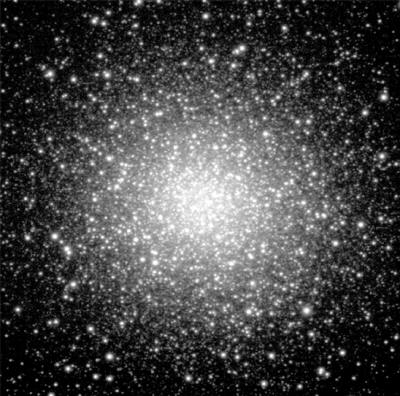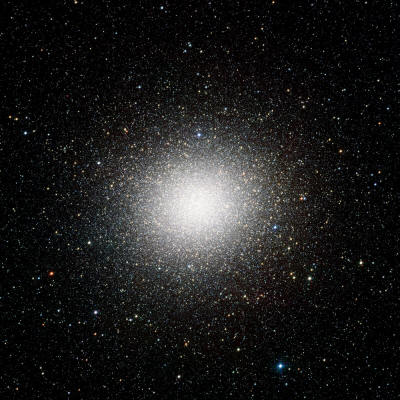|
by Stephen Smith
Credit: Kitt
Peak/Bill Keel and Lisa Frattare.
There are more
globular clusters around the Milky Way than there ought to be Stars form along filaments of electric current that flow through, into, and out of our galaxy.
Studies of galactic magnetic fields show
that the same process takes place to a greater or lesser extent in
every galaxy. A
recent Picture of the Day discussed
another group of objects in association with the Milky Way, dwarf
galaxies. It was noted that theories of
galactic evolution suggest there
should be far more of them than there actually are.
Why are they there? Some globular
clusters, such as Omega Centauri (below image), contain hundreds of
thousands of stars, yet gravitational models of the cosmos would
suggest that they should not be spherical.
M14, shown above, and its globular companions, “hover” over both hemispheres of our galaxy like a “swarm of bees,” as one astronomer put it.
An October 19, 2011 press release from the European Southern Observatory (ESO) announced the discovery of a few more of them, bringing the total number to 148.
What causes them to retain their
globular shapes when they must have completed thousands of orbits
around the galactic nucleus by now?
In an
Electric Universe, impossible
“black holes”
are explained as plasmoids, which
store the electromagnetic energy feeding the galaxy in a very
compact volume. As the well-known equation relating mass to
electromagnetic energy explains, the plasmoid will exhibit an
intense gravitational field.
Astrophysicists have already suggested
that globular clusters may contain small black holes to account for
their stellar velocities. Such a model fits well with
Halton Arp’s
observation that galactic nuclei eject core material, which evolves
into companion galaxies.
There are extremely sensitive detectors in orbit right now that are capable of increasing awareness, but instead they are being used to generate more mysteries. The electric motors of the stars and galaxies could have been charted years ago.
Perhaps a more attentive study of
globular clusters, since they are closer and more visible, will add
to our understanding of galactic nuclei.
|


